Do you have a question about the Oldsmobile 2004 Alero and is the answer not in the manual?
Details manual seat adjustments, including sliding the seat forward/rearward and adjusting height.
Explains how to adjust manual seats using the release bar to unlock and slide the seat.
Describes how to operate the power seat control for forward, backward, and cushion adjustments.
Provides information on rear seat operation, including folding the seatback and safety belt usage.
Comprehensive guide to safety belt usage, importance, and proper wearing techniques for all occupants.
Emphasizes the importance of wearing safety belts properly for everyone in the vehicle.
Explains the physics behind how safety belts work to protect occupants in a crash.
Addresses common questions about safety belt use, including entrapment and air bag interaction.
Provides guidance on proper safety belt usage for adults, emphasizing correct positioning and awareness of child restraints.
Describes the driver's restraint system and how to wear the lap-shoulder belt correctly.
Explains how to adjust the shoulder belt height for proper positioning and comfort.
Explains how to wear the right front passenger's safety belt properly, similar to the driver's belt.
Emphasizes the importance of rear seat passengers buckling up for safety and to prevent injury to others.
Details how to properly wear a lap-shoulder belt for rear seat positions next to the windows.
Describes the lap belt for the center rear seating position and how to adjust its length.
Explains the operation of the center rear lap belt, including length adjustment and buckling.
Comprehensive guide to child restraint systems, including older children and infants/young children.
Advises that older children should wear vehicle safety belts, preferably in rear seat positions.
Emphasizes the need for appropriate restraints for infants and young children due to their developing bodies.
Illustrates and describes different types of infant restraints: car beds and rear-facing infant seats.
Recommends securing child restraints in rear seats due to safety, especially for rear-facing restraints.
Describes the LATCH system, its anchors, and how restraints attach to secure children.
Provides step-by-step instructions for installing a child restraint using the LATCH system.
Explains how to secure a child restraint using the LATCH system or vehicle safety belts.
Details how to secure a child restraint in the center rear seat using the LATCH system or lap belt.
Warns against placing rear-facing restraints in the front seat due to airbag risk and advises moving the seat back.
Explains the Supplemental Restraint System (SRS) or air bag system, its components, and safety precautions.
Instructions for checking safety belt systems, buckles, retractors, anchorages for proper function and damage.
Advises on inspecting and replacing restraint system parts after a crash due to potential damage and serious injury risk.
Discusses door lock functions, security features, and the importance of locking doors for safety.
Discusses the dangers of unlocked doors and the importance of locking them for passenger and vehicle security.
Covers essential procedures for starting and operating the vehicle, including new vehicle break-in.
Describes the four ignition switch positions (OFF, ACCESSORY, ON, START) and their functions.
Covers general procedures for starting the engine, including automatic and manual transaxle variations.
Details starting procedures for automatic transaxle vehicles, requiring the shift lever in PARK or NEUTRAL.
Explains the operation of the automatic transaxle, detailing the shift lever positions and their functions.
Explains the shift pattern, clutch operation, and procedures for shifting through gears and using reverse.
Provides steps for shifting into PARK (P) for automatic transaxles, including brake and ignition switch operation.
Details the procedure for shifting out of PARK (P), including shift lock control system and brake application.
Provides a diagram identifying the main components of the instrument panel with labels A through T.
Explains the two positions for signaling turns or lane changes and how the lever returns automatically.
Describes how to change headlamps between high and low beams using the turn signal/multifunction lever.
Details how to operate the windshield wipers and washers, including intermittent and speed settings.
Describes the cruise control feature, its buttons, and conditions under which it turns off.
Provides step-by-step instructions for setting cruise control, including pressing ON/OFF and SET buttons.
Lists five ways to turn off cruise control: brake, CANCEL button, RES ACCL/CST SET, ON/OFF button, clutch pedal.
Describes the automatic headlamp system that turns headlamps on/off based on ambient light conditions.
Covers the climate control system for managing heating, cooling, and ventilation within the vehicle.
Explains how to control heating, cooling, and ventilation for the vehicle's interior.
Explains the purpose of warning lights and gages in signaling vehicle problems and the importance of paying attention.
Provides an overview of the instrument panel cluster, explaining its function in displaying vehicle status.
Explains the speedometer for speed display (mph/km/h) and the odometer for distance driven (miles/kilometers).
Explains the tachometer's function in showing engine speed in revolutions per minute (rpm) and cautions about the shaded area.
Describes the safety belt reminder light and chime that alerts occupants to fasten their safety belts.
Explains the air bag readiness light, its symbol, and what it indicates about the air bag system's electrical status.
Details the charging system light, its function when ignition is on, and what it signifies when engine is running.
Explains the brake system warning light, its function when ignition is on, with parking brake, and for brake problems.
Describes the ABS warning light, its normal operation during startup, and what it means if it stays on.
Explains the ETS warning light, its reasons for coming on, and implications for wheel spin limitation.
Explains the engine coolant temperature gauge, the red area, and what it signifies when the engine is too hot.
Describes the low coolant warning light and chime, indicating low coolant level or potential overheating.
Explains the Malfunction Indicator Lamp ('Service Engine Soon'/'Check Engine') and its role in monitoring emission systems.
Explains the oil pressure light, indicating low oil pressure, and the immediate need for service.
Describes the CHANGE OIL light, its function as a bulb check, and when it indicates an oil change is needed.
Describes the low washer fluid warning light and chime, indicating a low reservoir level.
Explains the Service Vehicle Soon light, which comes on briefly at ignition ON or if a problem is detected.
Explains how the fuel gauge indicates fuel level, when the indicator nears empty, and common owner questions.
Guides the user through understanding and operating the vehicle's audio system, including radio and CD features.
Details how to play the radio, adjust volume, and use the RCL knob for station frequency and time display.
Describes the Up Level radio with CD, including Radio Data System (RDS) features and XM™ Satellite Radio.
Details how to insert and play a CD, activate EQ settings, and the behavior when the ignition or radio is off.
Describes the radio with cassette and CD player, including RDS features and XM™ Satellite Radio Service.
Explains how to play the radio, adjust volume, use SCV, and recall station frequency or time.
Details how to find radio stations using BAND, TUNE knob, and SEEK/SCAN arrows.
Emphasizes driving defensively by expecting the unexpected and concentrating on the driving task.
Highlights the dangers of drinking and driving, its impact on judgment, coordination, vision, and attentiveness.
Explains the three systems (brakes, steering, accelerator) that control vehicle movement and the importance of tire traction.
Details braking action, perception time, reaction time, and the importance of avoiding heavy braking.
Explains that ABS is an advanced electronic braking system to help prevent braking skids.
Describes the ETS that limits wheel spin in slippery conditions by reducing engine power or upshifting.
Covers steering principles, including power steering, driving on curves, and emergency steering techniques.
Emphasizes the importance of taking curves at reasonable speeds and managing speed for control.
Explains that steering can be more effective than braking in emergencies and how to execute evasive action.
Reviews how loss of control occurs when control systems exceed tire traction, especially on slippery surfaces.
Explains the three types of skids (braking, steering, acceleration) and how to avoid or correct them.
Discusses challenges of driving in rain and on wet roads, including reduced traction and visibility.
Explains the danger of hydroplaning, how it occurs due to water under tires, and factors contributing to it.
Provides advice for driving on snow or ice, emphasizing caution, slowing down, and using Enhanced Traction System.
Provides methods for freeing a stuck vehicle, including the 'rocking' technique, with cautions about wheel spin.
Advises consulting a dealer or towing service for disabled vehicle towing and recreational towing information.
Emphasizes the importance of knowing vehicle capacity weight and not exceeding GVWR or GAWR limits.
Warns about the risks of towing a trailer without correct equipment and proper driving, and advises dealer consultation.
Provides essential advice for driving with a trailer, including getting to know the rig and checking components.
Explains the increased passing distance required when towing a trailer and the need to go further before returning to lane.
Guides on performing your own service work, recommending proper service manuals and cautioning about safety.
Recommends using regular unleaded gasoline with 87 octane or higher, and explains the effects of lower octane.
Provides cautions about underhood electric fans and hot engine parts that can cause injury or fire.
Covers engine oil checking, adding, type, and change indicators, emphasizing proper maintenance.
Explains how to check engine oil level by using the dipstick, ensuring the engine is warm and vehicle is level.
Describes when to add engine oil based on dipstick readings (MIN mark or cross-hatched area) and cautions against overfilling.
Recommends using oil meeting GM Standard GM6094M and specifies SAE 5W-30 viscosity as best for the vehicle.
Explains the GM Oil Life System for indicating oil changes based on engine conditions, not just mileage.
Provides instructions for resetting the CHANGE OIL light using the accelerator pedal after an oil change.
Explains the DEX-COOL® engine coolant, its properties, and the importance of using the correct mixture.
Recommends a 50/50 mixture of clean water and DEX-COOL® coolant, warning against plain water use.
Covers brake fluid, its function, checking levels, and cautions regarding spills and incorrect fluid types.
Explains that brake fluid is DOT-3 and its level should only be adjusted during brake system work.
Describes brake wear indicators, sounds, and cautions about continuing to drive with worn brake pads.
Offers instructions for safely jump-starting a vehicle with a dead battery using jumper cables.
Covers tire maintenance, including quality, safety, sidewall labeling, and replacement.
Warns that poorly maintained or improperly used tires are dangerous, leading to overheating or accidents.
Explains correct tire inflation pressures, checks, and the dangers of under or overinflation.
Provides advice on handling a tire blowout or slow leak, including steering, braking, and stopping procedures.
Explains how to safely change a flat tire by driving slowly to a level place and turning on hazard flashers.
Provides an introduction to the maintenance schedule and requirements, emphasizing importance for vehicle condition.
States that maintenance intervals, checks, and parts are necessary for good working condition; damage from neglect may void warranty.
Explains how the CHANGE OIL light indicates required service and outlines Maintenance I and Maintenance II schedules.
Explains how to check engine oil level and add proper oil if necessary.
| Brand | Oldsmobile |
|---|---|
| Model | 2004 Alero |
| Category | Automobile |
| Language | English |
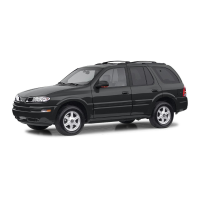
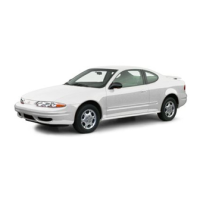
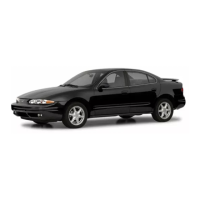
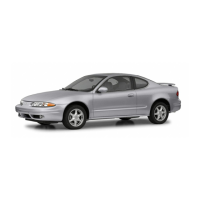
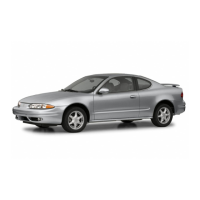

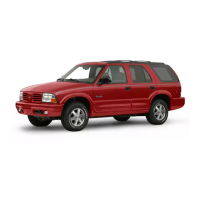
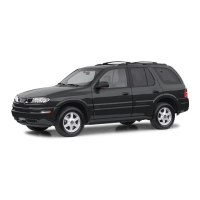
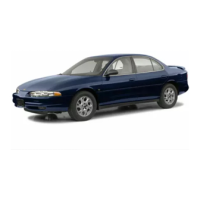
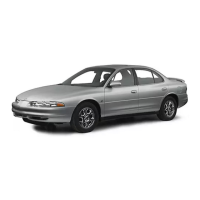

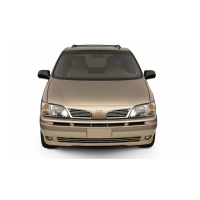
